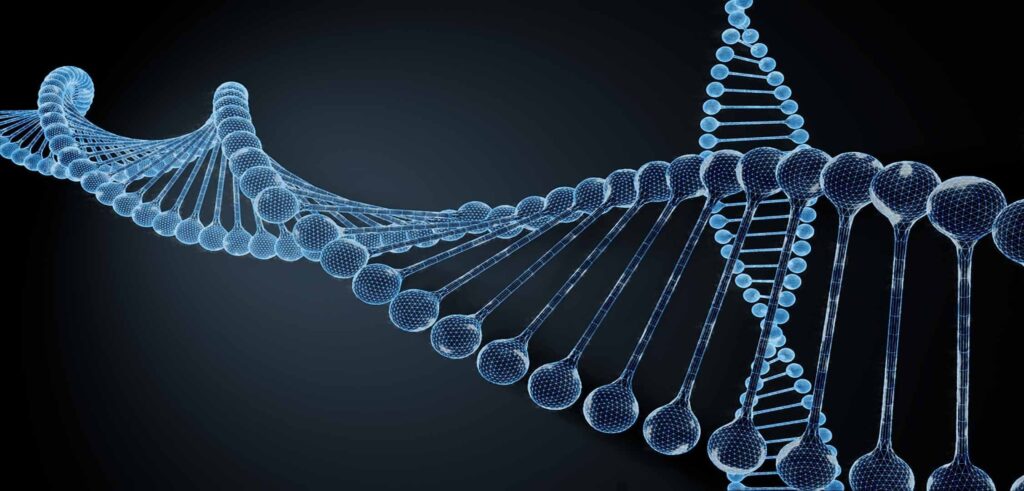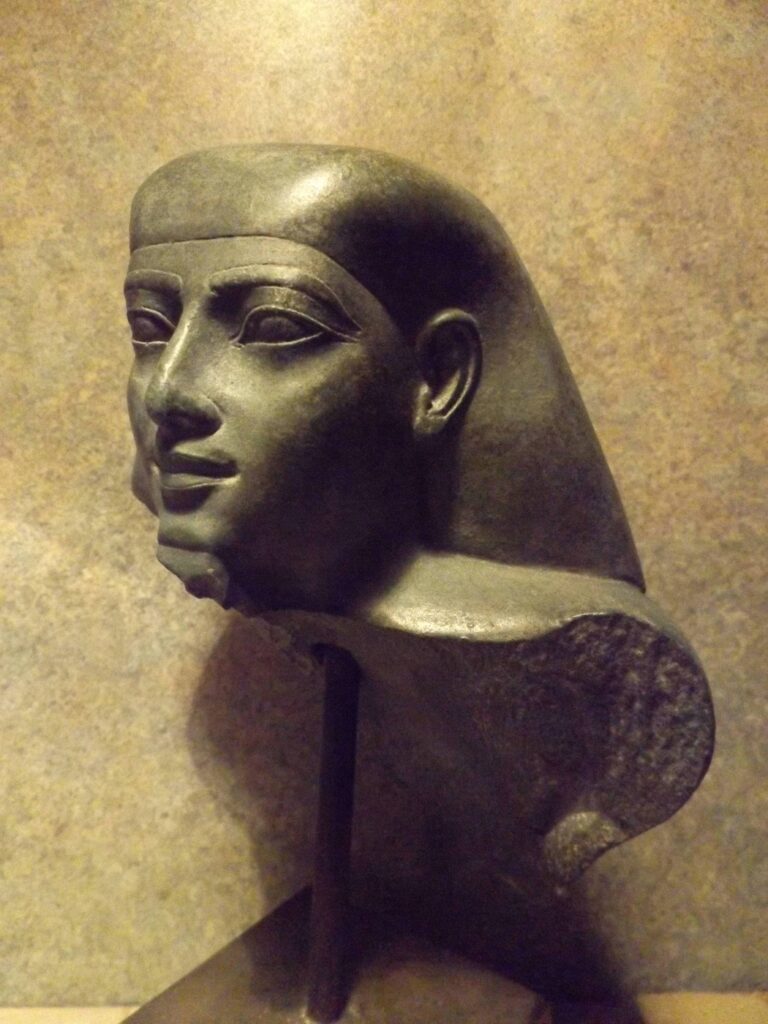Egyptian Christian Woman’s DNA Traced to 2,500-Year-Old Mummy—Contrasts with Reverse Case of Netflix Narrative that Cleopatra was Black

By: John Mason / Arab America Contributing Writer
An Egyptian-Christian woman recently learned from a genetic test that her DNA tied her to a dynasty 2,500 years ago. A separate analysis of this claim suggests that such a finding is easily manipulated to create a narrative of a special national identity for a specific part of the Egyptian population. On the race-color scale, this case reverse mirrors the Netflix narrative that Cleopatra was Black.
The first narrative: Egyptian-Christian woman shares DNA with an ancient mummy
At first blush, the news that an Egyptian-Christian woman named Treveina Basily discovered that her DNA directly descended from an ancient Egyptian mummy was fascinating and exciting. The DNA tied her to a period dating to the Saite dynasty, the ninth period of ancient Egyptian history, 2,500 years ago.
As the story goes, Mrs. Basily, living in Australia, wanted to find out about her lineage and family tree. She sent her genetic sample to a specialized analytic firm for testing. When the findings were returned to her, they revealed, according to news source, Egypt Independent, that “her genes date back to the era of the mummies of the Saite era.” A written analysis provided by an independent analyst noted that the DNA pointed to the finding that “she is of 100 percent Ancient Egyptian lineage, with no mixing whatsoever.”

Mrs. Basily asked an engineer to interpret the findings of the DNA analysis. As she explained in her story to the newspaper, Al-Masri Al-Youm, “The issue is not that I am purely Egyptian or not. Many Egyptians do the analysis and the result shows that they are 100 percent Egyptian…The difference is that my analysis shows a genetic similarity with the DNA of a mummy.”
The era of the Saite dynasty is known as ‘the Egyptian Renaissance.’ It was a period that saw that dynasty in the Delta “successfully liberating the country from Assyrian control once and for all.” Historians write that this was a time when “Egypt underwent a political, cultural, religious, and economic upheaval.” Courts were reorganized and a popular form of the Egyptian script devised in the Nile Delta was spread throughout the country. This broad distribution of the written language served to create a common cultural bond across the social classes of Egyptian society.
The second narrative: Egyptian woman belongs to ‘100 percent Ancient Egyptian lineage, with no mixing whatsoever’—not so fast
The publication, Ancient/Now, however, took pause when studying the case of the Egyptian Christian woman claiming Pharaonic ancestry. Its author averred, “What I found was a house of cards built on sand. The first four words of the article, specifically describing Mrs. Treveina Basily as ‘an Egyptian-Christian woman,’ combined with the featured photo immediately communicate the article’s underlying purpose of presenting modern Egyptians as a light-skinned nation, an increasingly common theme in Egyptian media and advertising.”
Ancient/Now reported that it is unclear which genetic testing company was used. Also, the article noted that the description of the test’s results was too complex to be understood by most customers. That seems odd, in that most testing companies are geared to explain to customers DNA results they can easily understand. The person Mrs. Basily asked to interpret her results, engineer Mohamed Abdel Hady, is the person who rendered the conclusion that her test results point to a direct, uninterrupted link to mummies of the Saite era.

Engineer Hady’s interest was in showing that modern Egyptians have a direct genetic link to the ancient Egyptians. That is not in question, since most genetic studies demonstrate that. What Hady seems to want to focus on goes beyond the connection of modern to ancient Egyptians. Rather, what he appears to want is to prove an argument for genetic purity. Such a premise takes us beyond historical and archaeological studies to “biomolecular analysis of ancient DNA.” Such analysis, according to Ancient/Now “is easily co-opted and manipulated for ideological and/or political purposes to help people create narratives about their national identity.”
To repeat, the story presenting Mrs. Basily’s ancestry as pure Egyptian is not a scientific, peer-reviewed study. It is especially the story’s use of language, such as ‘100 percent Ancient Egyptian lineage, with no mixing whatsoever,’ that leads one to a “healthy skepticism.” As Ancient/Now avers, “Using kinship—whether through genetics, genealogy, or both—to establish influence, legitimacy, and power is not a modern phenomenon, but is as ancient as civilization and human systems of power.”
Christian Egyptian woman’s claim of racial purity or Netflix claim that Cleopatra was Black come down to one issue—Black or White—the mystery of race
Arab America has already reported on the ruckus triggered by the Netflix release of a trailer for its upcoming documentary series Queen Cleopatra. It is part of a new documentary (meaning it’s supposed to be based on facts) series, titled African Queens. According to Arab America, “However, upon its release, the trailer sparked much controversy, particularly between Egyptians and African Americans. In fact, Egypt has recently announced its own documentary on Cleopatra in retaliation, as well as a potential lawsuit against Netflix.”
The Cleopatra article went into some detail, including archaeological depictions and historical records of her physical appearance. These purport to show that the Greek Ptolemies, during their rule in Egypt, went to some ends in maintaining a fairly pure genetic line. The issue of Cleopatra’s race is interesting not simply because the Greeks wanted to maintain their ancestral line, but because the question of the race of the ancient Egyptians has a long, controversial history and has been long debated.

Research on the genetic information based on pharaonic period mummies suggests a physical type most closely associated with peoples of the Near East. At the same time, according to Big Think, a British think tank online site, researchers have found that “Modern Egyptians share 8% of their genome with central Africans, far more than ancient ones. The influx of sub-Saharan genes only occurred within the last 1,500 years. This could be attributed to the trans-Saharan slave trade or just from regular, long-distance trade between the two regions.”
Significant genetic shifts in the Egyptian population only began in the later Pharaonic period. These were a result of invasions by such conquerors such as “Alexander the Great, the Greeks, Romans, Arabs, and more.” Researchers have concluded that Egypt’s “population remained genetically relatively unaffected by foreign conquest and rule.”
In fairness to the idea that the Egyptian Christian woman’s DNA bis traceable to the 2,500-year-old pharaonic mummy, we must await any new analyses that might clarify the issue of so-called genetic purity. As for Cleopatra, the issue of her Afrocentric blackness has seemingly been settled—she was genetically descended from a long line of Greek Ptolemies and maintained that ancestry. In this case, we nevertheless await the counter-documentary by the Egyptian government, which will refute the Netflix version of Cleopatra.
Sources
–“Egyptian woman traces her DNA to ancient mummy from Saite dynasty,” Egypt Independent (via Al-Masry Al-Youm), 5/16/2023
–“An Egyptian woman traces her DNA to a mummy from the Saite Dynasty? Well, maybe not,” Ancient/Now, 5/24/2023
–“Netflix’s ‘Queen Cleopatra’ Sparks Controversy, Arab America,” 5/172023
–“Black or white? Ancient Egyptian race mystery now solved,“ Big Think, 1/16/2022
John Mason, PhD., who focuses on Arab culture, society, and history, is the author of LEFT-HANDED IN AN ISLAMIC WORLD: An Anthropologist’s Journey into the Middle East, New Academia Publishing, 2017. He has taught at the University of Libya, Benghazi, Rennselaer Polytechnic Institute in New York, and the American University in Cairo; John served with the United Nations in Tripoli, Libya, and consulted extensively on socioeconomic and political development for USAID and the World Bank in 65 countries.
Check out our Blog here!









